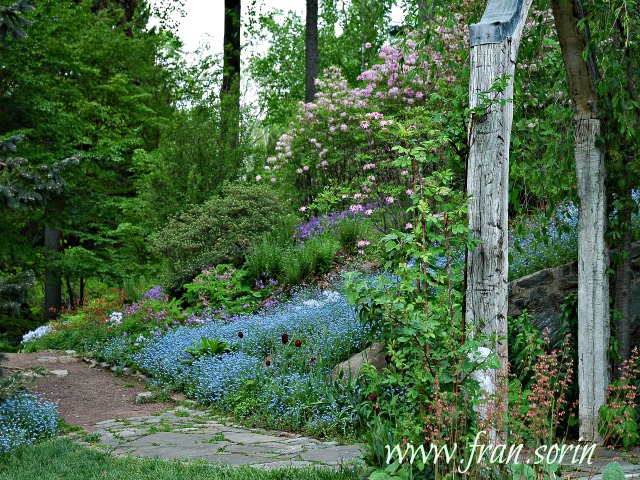Very shortly after we moved into the house, and with a clean slate, I began work on designing the herb and vegetable garden. The good growing season was coming up and I wanted to be able to plant a fall/winter crop. There is rarely a day goes by when I do not go into the garden to pick some herbs to enhance my dinners.
And like many herb gardens there is a sprinkling of flowers, some of them edible, and a few grasses to soften the paving made by David. (Today it is easier to find larger pavers but 20years ago it was impossible.)
Whether fresh or dried, herbs are plants that I could never do without and they are so easy to grow. Parsley, sage, rosemary and thyme plus chives, oregano, marjoram, mint, cilantro, and lemon grass all have found a home in my garden. And for those who do not have a garden many of these can be grown together in a single pot placed outside the kitchen door or on a sunny kitchen window ledge in the house.
This is a herb garden I made for my son for Christmas. Unfortunately it never reached him as we had to cancel our plans to go visit. Notice the addition of edible flowers. Among the herbs I planted are chive (onion and garlic) parsley, cilantro, marjoram and mint. If grown organically, flowers of violas can be added to your salads.
Below I have picked thyme and rosemary which are the only herbs needed to flavor my slow cooker pot of white beans.
I also use rosemary chopped with garlic, salt and olive oils as a marinade for rack of lamb.
A sprinkle of dried thyme leaves, olive oil and salt is all you need to enhance the taste of roast tomatoes.
The second one is more ornamental, although it can be used in the kitchen. It has more rounded leaves Salvia officinalis 'Berggarten'
I grow 2 varieties of chive, onion chives and garlic chive. I prefer the former but it is more difficult to grow because the snails seem to really like it and frequently sever the plant at the base. It grows best throughout the winter blooming with beautiful balls of lilac flowers, which can also be used in salads. It is distinguished from garlic chives by its hollow round stems. Garlic chives have flat stems and have the typical allium white flower heads.
Onion chive.
I also grow society garlic but only for its flowers and performance in our Texas climate. I have been told that the leaves can be used as a flavoring and the reason it was called society garlic was because it did not cause the same breathy problem that garlic does. I'm not sure this is really true!
dillThe feathery fronds of dill are wonderful with fish and eggs.
Cilantro I always allow to flower and go to seed so every year, in the fall, cilantro pops up all over the garden. It is growing in among beets and carrots this year as well as in the herb garden path.
I grow Italian parsley, another herb I permit to go to seed, and find it popping up in many places.
And finally oregano. I try to pick the stems early in the morning to hang in bunches to dry. I then crumble the leaves into a jar to use in many Italian dishes. Mixed chopped herbs are delicious in polenta. Oregano grows throughout the year and must be cut back frequently if you want to prevent it going to seed and keep it nicely shaped. It makes a useful small evergreen shrub for the garden.
Basil is a summer herb which grows well for us in Texas. It dies over the winter and must be replaced every spring when temperatures are well about 50°
If you don't have a specific place for growing herbs then plants them in among garden plants. They will reward you by flavoring your food year round as well as saving you money at the grocery store.












































































